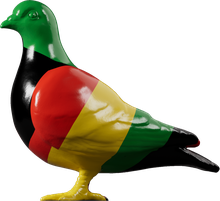Archaeology — C. 1500-1599
Rose Theatre pin
Copper alloy dress pins. These are some of the 685 small pins found at the site of the Rose Theatre on Bankside. Finds of pins were so numerous because they were used so heavily in everyday clothing in the 16th century. People dressed using pins to fasten the different elements of their clothes together. Pinning allowed people to get a different look from the same garments (e.g. pinning the skirt in a different way). A lady might have one basic dress but several pairs of sleeves that she could change. Wealthy women were so pinned into their fashionable clothes that it could take two hours to dress with the help of a lady’s maid. A rich woman might use as many as 50-100 pins in one outfit. Pinning also allowed clothes to fit the wearer perfectly. Losses of pins must have been very common in the theatre, especially when people were brushing against each other in crowds or from the actors’ costume changes and from falling off the actors during the drama of the play.
The Rose was built in 1587 and was one of four purpose-built playhouses on the south bank of the Thames in London (the others were the Globe, the Hope and the Swan). It was demolished in 1606. Archaeologists discovered the remains of the Rose in 1988. Reference: Bowsher, J. & Miller, P. (2009), 'The Rose and the Globe - playhouses of Shakespeare's Bankside, Southwark. Excavations 1988-90’, MOLA Monograph 48.
- Category:
- Archaeology
- Object ID:
- SBH88[183]<310>a
- Object name:
- Rose Theatre pin
- Object type:
- Artist/Maker:
- Department of Urban Archaeology
- Related people:
- Related events:
- Related places:
- Production date:
- c. 1500-1599
- Material:
copper alloy
- Measurements/duration:
- L 30 mm (average)
- Part of:
- —
- On display:
- —
- Record quality:
- 80%
- Part of this object:
- —
- Owner Status & Credit:
Archaeological archive
- Copyright holder:
digital image © London Museum
- Image credit:
- —
- Creative commons usage:
- —
- License this image:
To license this image for commercial use, please contact the London Museum Picture Library.

